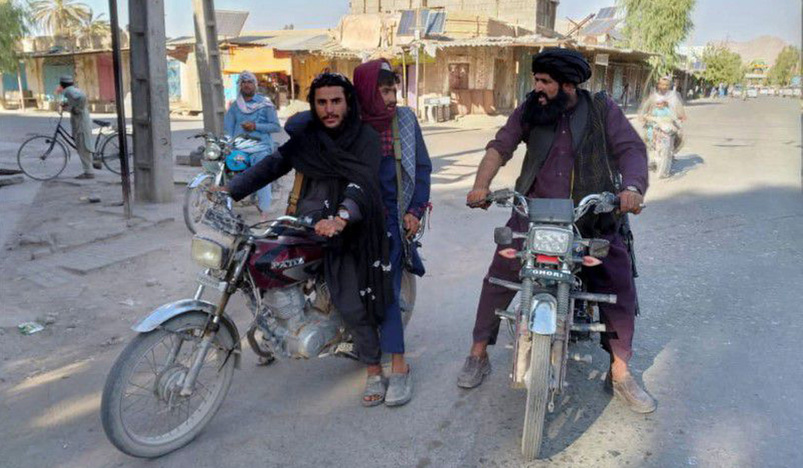
Taliban fighters patrol Farah, Afghanistan August 11, 2021. REUTERS/Stringer
REUTERS
Taliban insurgents control an estimated 65% of Afghan territory, after making rapid advances against local forces who are largely fending for themselves as foreign troops withdraw.
Following are some of the major milestones in the Islamist militant movement's advance in recent months. Other deadly attacks occurred, some blamed on the Taliban and some on other jihadist groups including an offshoot of Islamic State.
Talks between the Taliban and the Afghan government on a political understanding that could lead to a peace deal, backed by the United States and its allies, have failed to make significant progress.
- April 14 - President Joe Biden announces U.S. troops will withdraw from Afghanistan starting on May 1 and ending on Sept. 11, bringing America's longest war to a close. It was an extension of the previous withdrawal deadline of May 1 agreed between the United States and the Taliban.
- May 4 - Taliban fighters launch a major offensive on Afghan forces in southern Helmand province. They also attack in at least six other provinces.
- May 11 - The Taliban capture Nerkh district just outside the capital Kabul as violence intensifies across the country.
- June 7 - Senior government officials say more than 150 Afghan soldiers are killed in 24 hours as fighting worsens. They add that fighting is raging in 26 of the country's 34 provinces.
- June 22 - Taliban fighters launch a series of attacks in the north of the country, far from their traditional strongholds in the south, and the UN envoy for Afghanistan says they have taken more than 50 of 370 districts.
- July 2 - American troops quietly pull out of their main military base in Afghanistan - Bagram Air Base, an hour's drive from Kabul. It effectively ends U.S. involvement in the war.
- July 5 - The Taliban say they could present a written peace proposal to the Afghan government as soon as August.
- July 21 - Taliban insurgents control about a half of the country's districts, according to the senior U.S. general, underlining the scale and speed of their advance.
- July 26 - The United States vows to continue to support Afghan troops "in the coming weeks" with intensified airstrikes to help them counter Taliban attacks.
- July 26 - The United Nations says nearly 2,400 Afghan civilians were killed or wounded in May and June in escalating violence, the highest number for those months since records started in 2009.
- Aug. 6 - Zaranj in the south of the country becomes the first provincial capital to fall to the Taliban in years. Many more are to follow in the ensuing days, including the prized city of Kunduz in the north.
The Taliban never fully controlled the north of the country when they were in power, and seem intent on securing it this time possibly before closing in on the capital.
- Aug. 13 - Four more provincial capitals fall in a day, including Kandahar, the country's second city and spiritual home of the Taliban. In the west, another key city, Herat, is overrun and veteran commander Mohammad Ismail Khan, one of the leading fighters against the Taliban, is captured.
Western countries prepare to send troops to help evacuate embassy staff from the capital, Kabul.
Compiled by Kabul bureau; Editing by Mike Collett-White
.jpg)
Qatar Secures Place Among the World's Top 10 Wealthiest Nations
.jpg)
Hamad International Airport Witnesses Record Increase in Passenger Traffic

Saudi Arabia: Any visa holder can now perform Umrah

What are Qatar's Labour Laws on Annual Leave?
Leave a comment